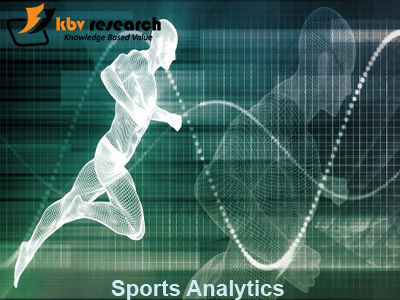Here’s How Sports Analytics Has Emerged as Soccer’s Rising Star
- Here’s How Sports Analyti

- Feb 19, 2020
- 4 min read
Sports associations have a broader range of information on concussions and thus, physicians of the sports world can now improve care facilities for players. This is where sports analytics comes in handy, especially in soccer, which is one of the most popular sports played worldwide.
As the number one sport in the world, this game is exceptional in its ability to reinforce initiatives that can enrich the lives of young people all over the world. Sporting games yield huge amounts of data. Advanced machine learning and data mining are transforming sports for athletes and game watchers. Performance optimization, expense/training management, and data analysis are now available with key data to enhance mobile, chat, and social platform experience.

All about sports analytics
Sports analytics can provide scientific sports data supplied in an easy-to-understand format that provides teams, athletes, schools and sporting organizations the opportunity to make informed decisions and improve overall efficiency.
Any sports analytics technology is basically a process of four common steps— capturing, analysis, presentation, and implementation. By putting robust templates for data capture to use, the technology gathers valuable data and insights at the time of training and competition. This helps the providers in studying and analyzing the strengths and weaknesses of an athlete to help them gain the edge over the competition.
In the next step, scientific techniques are used to collect quality analytical sports data that can identify trends and key indicators. By analyzing the stats, performance trends and game patterns that matter, the analysis is tailored to get the best out of the player and the team. The raw sports data is turned into powerful & transparent visual tools to evaluate sports metrics or create performance reports. High-quality data presentation tools allow more informed decisions on and off the field. Lastly, sports analytics helps to implement the performance KPIs and targets and can put in place plans that ensure the team to continue to push for excellence.
3 key elements that determine the importance of sports analytics technology
Sports analytics for soccer
Due to the proliferation of sensing technologies that provide high-fidelity data streams for each match, sports analytics for soccer is gaining a high interest in academia and industry. Soccer-logs describe the events occurring during a match and are collected via proprietary tagging software. Furthermore, video tracking data identifies player trajectories during a match and is obtained by video recordings. Global Positioning System (GPS) data identifies players' patterns during training sessions and is collected from player-worn GPS devices.
Sports analytics trends
Sports analytics enables business organizations to search for groundbreaking technology in sports and provides various solutions to organize and manage teams for top business models. An effective sports analytics solution also helps sports organizations in achieving a competitive edge that helps them to make effective decisions and create an effective game strategy. Over the forecast period, the adoption of cloud-based sports analytics services and solutions is expected to accelerate as it offers the predictive capacity to companies without investing much on IT infrastructure and technical resources.
Sports are a massive industry built on partnerships that range from sponsorship and advertising to player trading to everything else. When teams agreed in the past, they didn't have a lot of knowledge, which compelled them to give up huge amounts of margin. Equipped with sports analytics data, teams are now able to optimize these negotiations and save millions.
Internet of Things (IoT) in sports
The Internet of Things (IoT) plays a major role in sports through player development, player safety, and engagement with fans. Coaches, players, and fans can shape a game strategy, analyze possible injuries, and individualize experience by analyzing multi-device data gathered. The footwear industry has witnessed a rise in the smart shoes market with increasing participation in sports and engagement in fitness activities. The widespread craze of sports also emphasizes the need for sports analytics, which is now being made possible with the advent of technologies like smart shoes.
Where does the sports analytics industry lack currently?
Due to the heavy R&D activities and problems related to data processing through an embedded device, initial investments in sports analytics technology and product costs are high. The storage and data- related costs are also important. In addition, high costs require recruiting technicians to analyze sports data and training employees to hamper the growth of the market. The costs involved with the sports analytics solution will increase for all the corrective measures and maintenance of the device. This, in turn, restricts the investment of various end-users in these sport technology systems, limiting their applications and limiting the growth of the sports analytics market.
Conclusion
Growing adoption and involvement in fantasy gaming has led to the need for analytics in sports that will also act as a market driver in the years to come. The fact that analytics has changed many companies around the globe is undeniable. The increase in data volume generated on-field among various sports organizations has increased, which in turn has led to increased management and analysis of these types of data. Therefore, the use of sports analytics in different sports organizations has increased.
The sports analytics tools have been implemented by various sports, which have enabled them to analyze a vast volume of data and provide the sports clubs and coaches with accurate results. Therefore, the need to improve the performance of the sports team and to have a larger fan base by delivering good team performance drives the market growth. In addition, the team manager’s need to maximize the winning percentage and overall team success and increasing the pay costs to players can be achieved through the introduction of sports analytics technologies, which in turn drives the market growth. The Global Sports Analytics Market is projected to surface at a market growth of 26.8% CAGR during the forecast period.








Comments